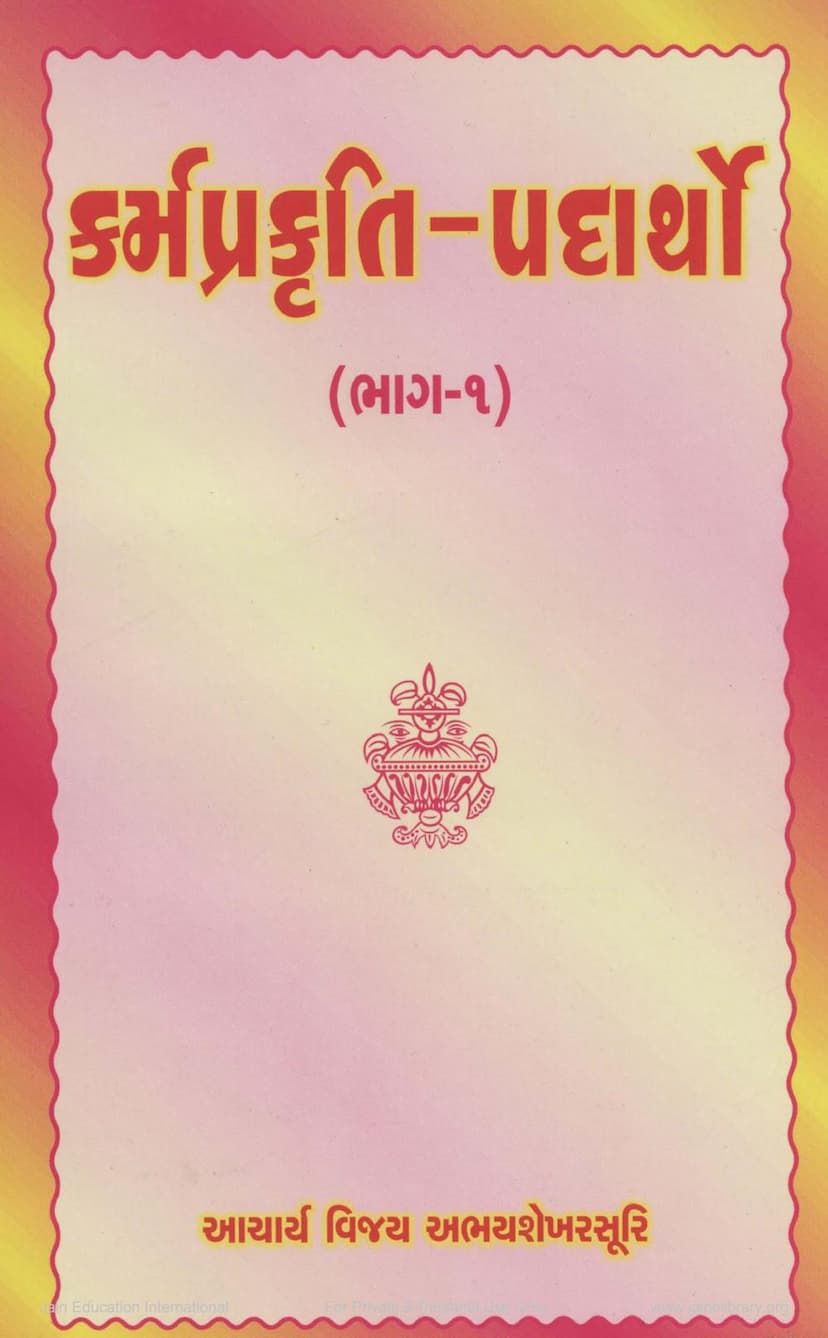Karm Prakruti Part 01
Added to library: September 2, 2025

Summary
This document is the first part of "Karm Prakruti Padartho" (States of Karmic Matter), authored by Acharya Vijay Abhayasekharsuri. Published by Shri Shwetambar Murtipujak Jain Sangh, Kolhapur, this book is a comprehensive study of Jain karmic philosophy, aiming to make the complex concepts accessible in Gujarati.
The book is a compilation based on the original work by Shri Shivsharma Suri Maharaj, with commentaries from Shri Malaygiri Suri Maharaj, Shri Yashovijayji Upadhyay, and annotations by Shri Munichandrasuri Maharaj. Muni raj Shri Abhayasekharvijay Maharaj (now Acharya Vijay Abhayasekharsuri) is credited as the compiler and researcher, with guidance from Pujyapad Acharya Bh. Shri Jayghoshsurisuri Maharaj.
Key aspects covered in this first volume include:
- Introduction to Karmic Principles: The text emphasizes the profundity and intricate nature of karmic science, highlighting how its study can lead to spiritual purification and inner focus. It acknowledges the contributions of various esteemed Jain scholars who have elucidated these texts.
- Structure of the Book: This first volume focuses on the initial aspects of karmic processes, specifically detailing:
- Bandhan Karan (Bondage Action): This section delves into the initial binding of karmas, explaining the process through various "doors" or aspects.
- Sankram Karan (Transmigration Action): This covers the movement and transformation of karmic matter.
- Udvartana and Apavartana Karan (Ascension and Descension Actions): These describe how the intensity or duration of karmas can be increased or decreased.
- Detailed Explanation of Concepts: The book breaks down complex concepts like:
- Virya (Energy/Power): Its divisions, manifestations, and ten aspects of consideration (like Avibhagpari-chchhed, Vargana, Spardhak, etc.).
- Varganas and Spardhakas: Explaining the classification of soul-atoms and their groupings.
- Yogasthanas: The various states of the soul's engagement with karmic matter.
- Pudgalvarganas: The different categories of matter in the universe.
- Sneha (Attachment/Affinity): Its role in karmic bondage and classification into different types of Spardhakas.
- Bandhan Prakarana (Types of Bondage): Explaining the different ways karmas attach to the soul, including Pradesha Bandha (through the extent of karmic matter) and Rasan Bandha (through the intensity/quality of karma).
- Pradesh Bandha: The distribution of karmic particles.
- Rasa Bandha: The bonding of karmic intensity.
- Tiivrata-Mandata (Intensity-Languidness): How the intensity of karmas varies.
- Tivrata-Mandata of various karmic types: Specifically discussing the intensity and languidness of Tiryanch (animal realm) and lower-Gotiya (status) karmas.
- Sthiti Bandha (Duration of Bondage): Exploring its four aspects and related concepts like Adhyavasay Sthana (states of disposition).
- Sankram Karan: Detailed explanations of Prakriti Sankram (change in karmic type), Sthiti Sankram (change in duration), Rasa Sankram (change in intensity), and Pradesha Sankram (change in extent).
- Udvartana and Apavartana: Including detailed descriptions of both Nirvana-ghati (unhindered) and Vyaghata-bhavi (hindered) processes, as well as their nuances related to experience, time, and the nature of karmic matter.
- Anubhaga Udvartana and Apavartana: Explaining the increase or decrease in the experiential quality of karmas.
- Alpabahutva (Comparative Quantity): Analyzing the relative quantities of various karmic states, energies, and processes.
- Jeeva Samudahaar: Considering the aspect of the soul in relation to these processes.
- Kshayosham (The Process of Subsidence and Destruction): A dedicated section explaining this fundamental concept of Jain metaphysics.
The book includes appendices (Parishisht) that further elaborate on specific topics like Kshayosham and the interrelations of different Uttar Prakritis (sub-types of karma) in Sankram (transmigration). The writing style aims to be detailed and explanatory, making intricate philosophical concepts understandable. The publication reflects the publisher's commitment to disseminating Jain knowledge.